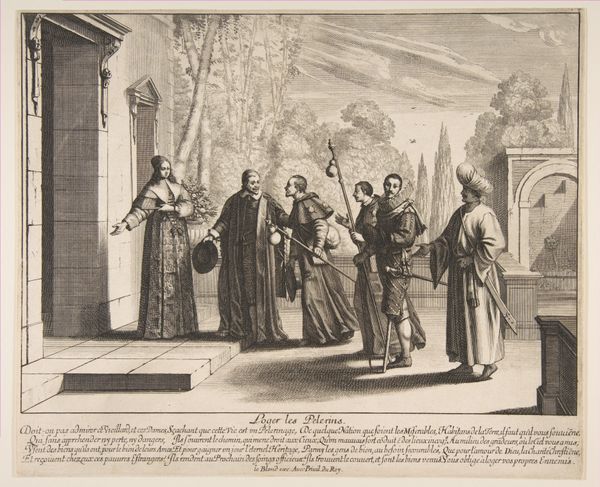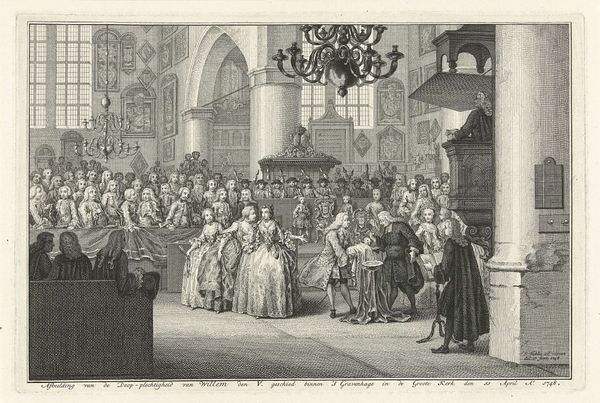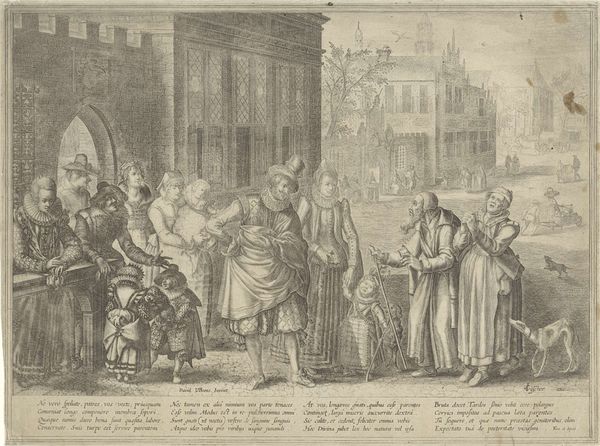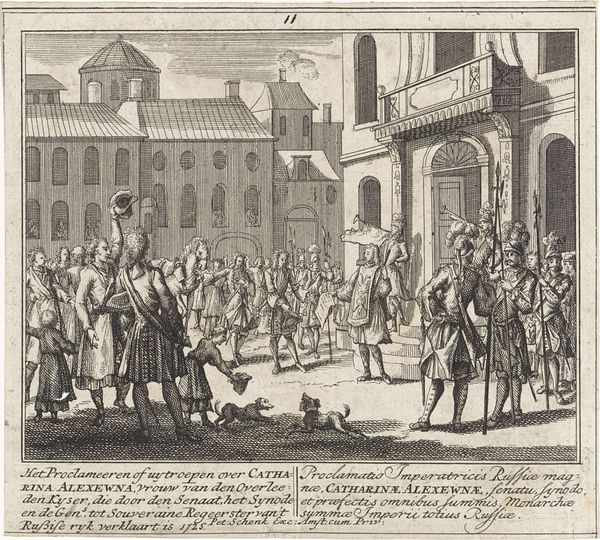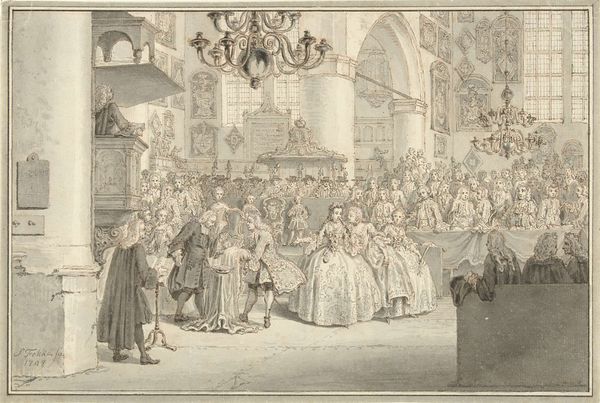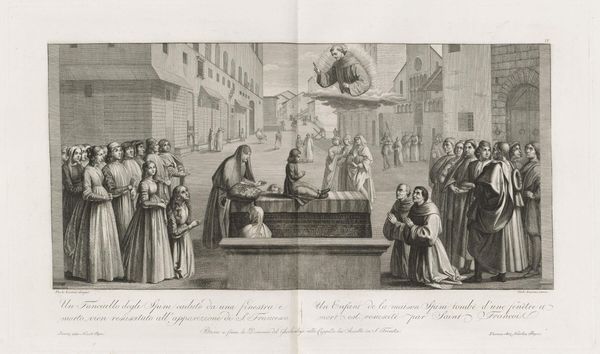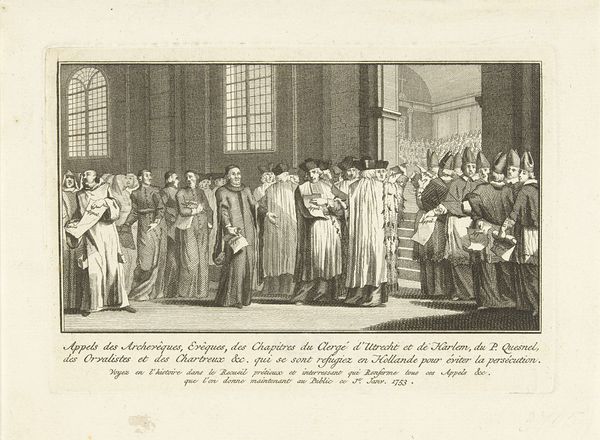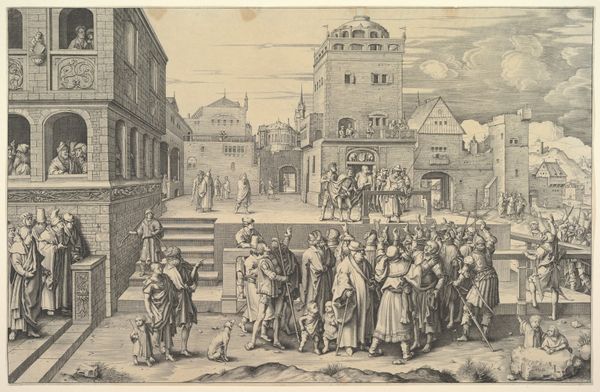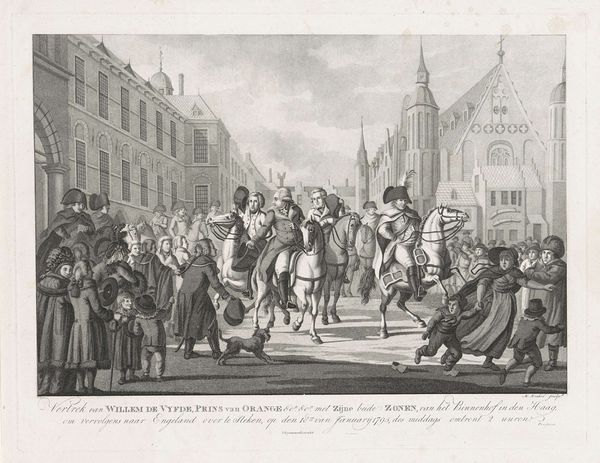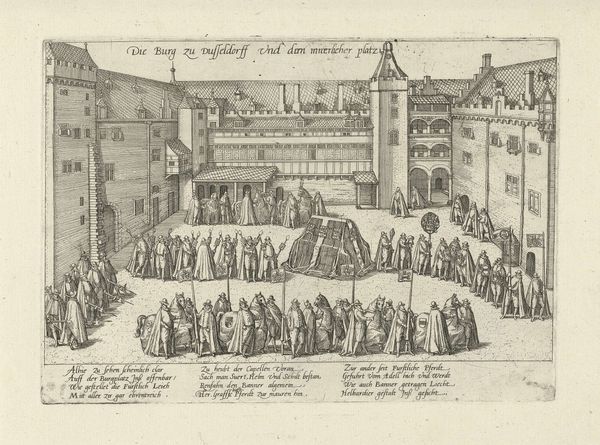
drawing, print
#
drawing
#
baroque
# print
#
landscape
#
men
#
line
#
history-painting
Dimensions: sheet: 10 1/8 x 12 1/8 in. (25.7 x 30.8 cm)
Copyright: Public Domain
Curator: "Burying the Dead," realized sometime between 1602 and 1676 by Abraham Bosse. A fascinating example of Baroque printmaking from the Met’s collection. What strikes you first? Editor: The somberness. Even without color, the deep blacks of the figures’ robes convey an inescapable gravity. The crisp lines, the architecture…it all contributes to a mood of dignified sorrow, don’t you think? Curator: Absolutely. Bosse was documenting aspects of French society, reflecting and, perhaps, subtly critiquing it. Here, we see a formal burial procession, likely of a prominent individual. Consider the societal emphasis on death rituals, performance of mourning, and who has access to this display. Editor: The weight of ritual is potent. Look at the arrangement of the figures. A hierarchy is built, as the mourners in dark cloaks are in contrast with the religious figures up front that are adorned with brighter gowns and more elaborate accessories. They become central visual figures, and emphasize their spiritual guidance. Curator: Note the architecture too. It suggests a place of significance—perhaps a monastery or wealthy family estate. Contextualizing this within the religious and political landscape, one sees that Bosse’s Baroque style, precise and detailed, is portraying the values of the establishment. This visual emphasis served to solidify the values of their societal standing. Editor: Precisely. Even the little dog at the bottom adds to that reading for me. It’s a detail, but a powerful one—a symbol of fidelity, but also of the everyday life that continues, even amidst such solemnity. It brings to mind mortality, faith, and the intersection of both. Curator: The intersectionality here allows us to also question the role of gender and power in death rites and collective memory-making during this era. Were women excluded or granted limited visibility? Who benefitted most? Bosse's print opens many paths. Editor: It does. For me, revisiting "Burying the Dead" sharpens the symbolic weight of these types of mourning rituals throughout the course of human history. Thank you for unpacking this gem of the Baroque. Curator: My pleasure. Hopefully our audience finds its layers resonant.
Comments
No comments
Be the first to comment and join the conversation on the ultimate creative platform.
